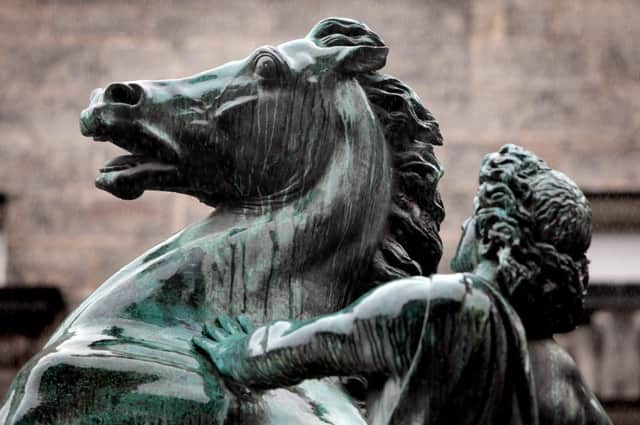The pig ear theory on Edinburgh Bucephalus statue


New pictures of the statue of Alexander the Great taming Bucephalus give credence to a popular Edinburgh story that in a fit of artistic pique at being short changed for the statue the artist deliberately gave his creation the ears of a sow.
Steell was commissioned in 1832 to create a bronze statue of Alexander the Great taming his warhorse he spent years perfecting the artwork.
Advertisement
Hide AdAdvertisement
Hide AdBut the money ran out before he completion and the statue remained in limbo for more than 50 years until it was finally cast in bronze in 1883.
Paul McAuley, from Edinburgh Museums, said Sir John was offered 100 guineas by the council plus a large sum in donations when the statue was commissioned in 1832.
He said yesterday: “It seems that it took quite some time for him to be paid. From the dates in the records, the implication is that he was not paid for around 50 years and this is where the story comes from.
It is believed that the artist gave the unharnessed horse on the statue pig’s ears just before it was cast in bronze in 1883 when it became clear he would not be paid in full.
The statue shows the triumph of intelligence over brute force, as Alexander is able to tame the powerful horse.”
Sir John, from Aberdeen, who was apopinted sculptor to Queen Victoria in 1838, died just eight years after his monument was completed.
The bronze shows the moment Alexander the Great tamed the horse by turning it towards the sun so it could no longer see the shadow.
It was presented to the city by subscribers in 1884 and moved from St Andrew Square to the City Chambers in 1916.